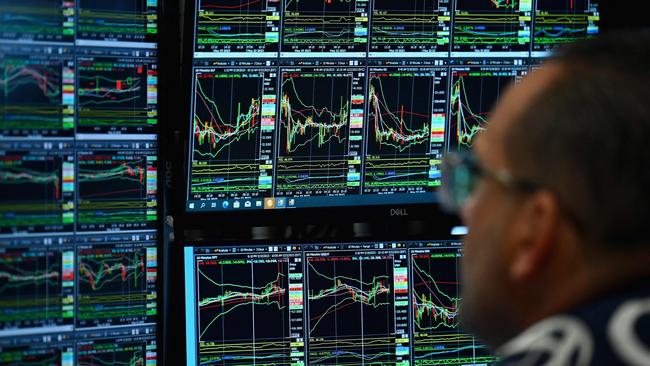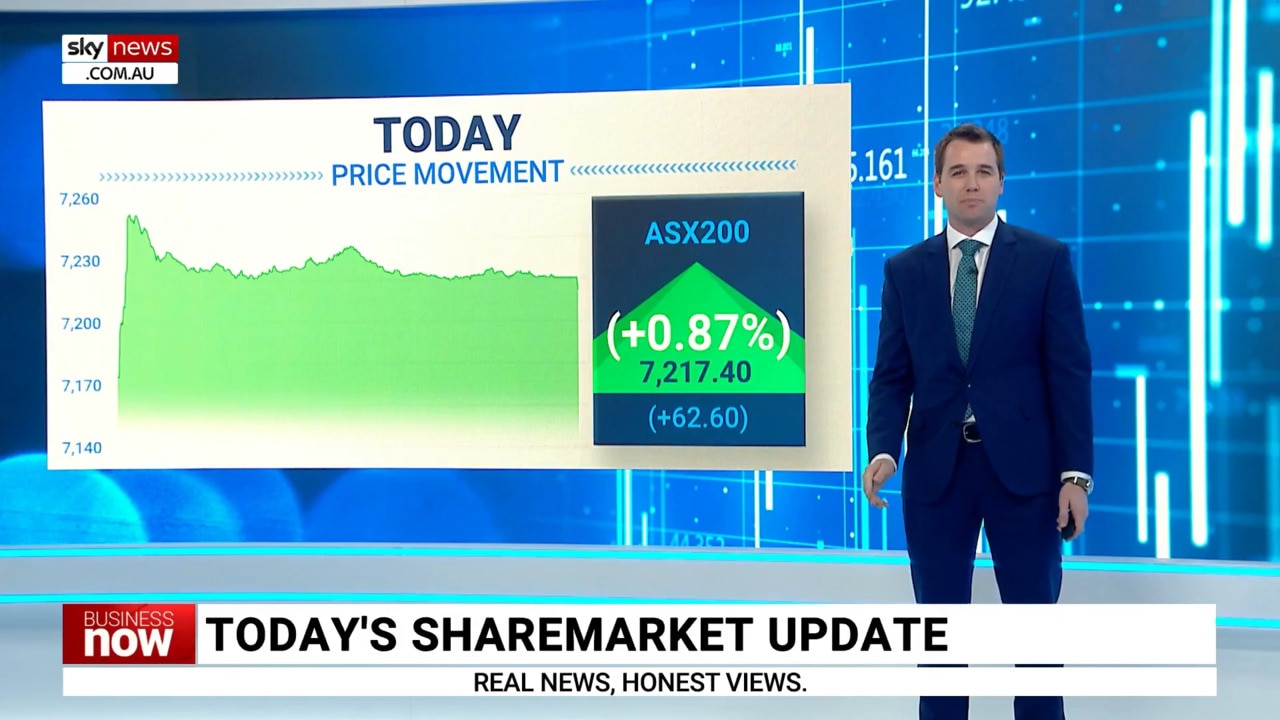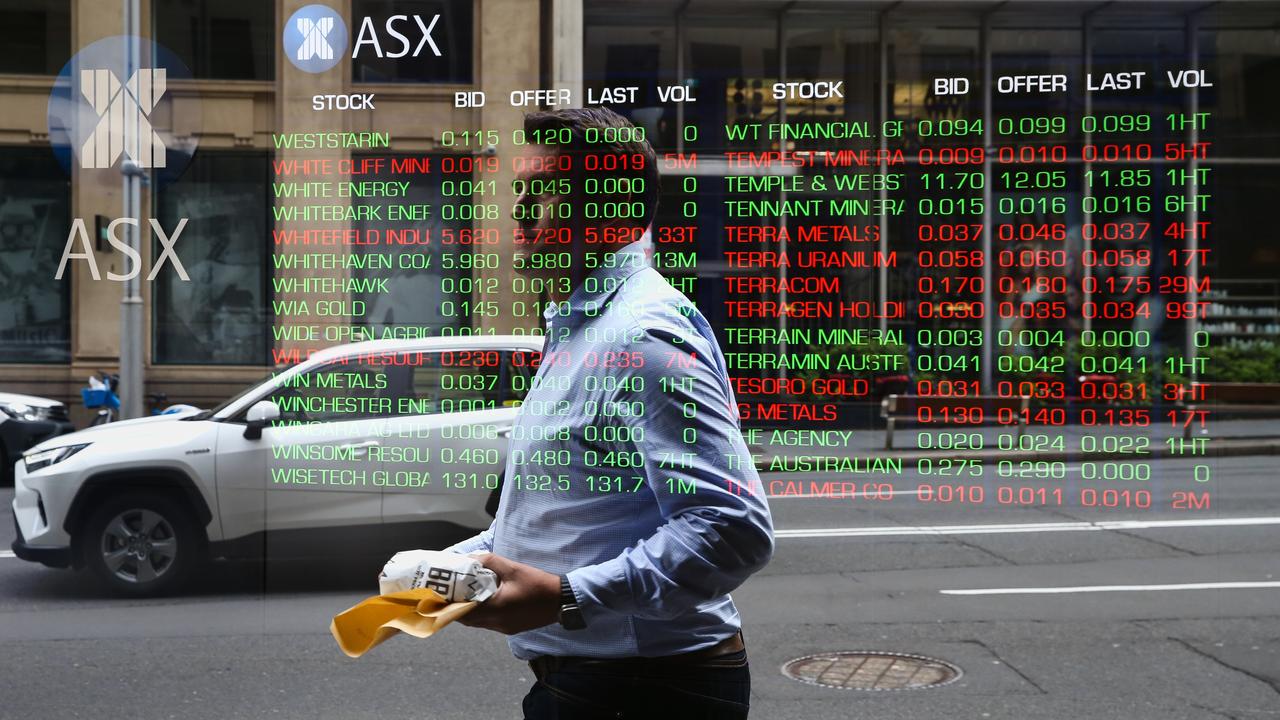Analysts bullish on stocks as problems solved
Strategists are starting to upgrade their US sharemarket views as the AI revolution and a tentative US debt-ceiling deal lifts the S&P 500 to six-month highs.

At the risk of arriving late to the party, strategists are starting to upgrade their US sharemarket views as the AI revolution and a tentative US debt-ceiling deal lifts the S&P 500 to six-month highs.
The latest to do so was Citi, after a similar move by Bank of America last week.
Citi’s global asset allocation team upgraded US equities to neutral, with an unchanged year-end target price for the S&P 500 of 4000 points versus Friday’s close at 4205.45.
Citi also upgraded the US tech and industrials sectors to overweight, while also upgrading communications to neutral, and downgrading materials to underweight and going more negative on financials and real estate. It also cut its recommendation on Australian shares to underweight.
Most strategists still think the US sharemarket is about to be hit by a recession.
While the US debt ceiling crisis looks close to being resolved, higher than expected US PCE inflation on Friday increased the market-implied chance of another Fed rate hike from 50 per cent to 69 per cent. A US hike by July was fully priced in as of last week, and just 7 basis points of cuts were priced in by year end. The year-end implied Fed funds rate rose 25bps to 5 per cent last week.
US non-farm payrolls data on Friday and US CPI data next week will be crucial inputs to the next FOMC meeting on June 14, but there’s scope for renewed concern about interest rates after the US core PCE deflator for April rose 0.4 per cent on-month versus the 0.3 per cent expected.
US inflation has peaked but after more than a year of aggressive interest rate hikes, the three-month annualised core PCE deflator is 4.3 per cent, the same level it was in April 2022.
It’s also hard to argue – in terms of price action or volatility – that the US sharemarket has been restrained by debt-ceiling angst, having risen 10 per cent from its March low.
However, there’s been more recognition of the fact that AI is having a bigger than expected impact on US corporate earnings. Nvidia shares surged 25 per cent last week after its next quarter revenue guidance came in 57 per cent better than expected.

Nvidia is up 250 per cent since mid-October, part of a huge rise in the top-10 S&P 500 companies by market capitalisation that’s driven most of a 10 per cent year-to-date rise in the S&P 500.
“With the end of the Fed hiking cycle upon us, and the AI story probably with further legs, we move our US equity underweight back to neutral, and the technology sector to an overweight,” said Citi’s global head of macro, asset allocation and EM strategy, Dirk Willer. “While there is an obvious question of whether the story is running well ahead of itself, we think it still seems very early in the AI development curve, and possibly too early to disappoint.”
The S&P 500 rose 1.3 per cent on Friday, helped by positive signals from US debt ceiling talks ahead of news that an in-principle deal was reached at the weekend.
Australia’s S&P/ASX 200 rose 0.9 per cent to 7217.4 points on Monday but closed well below an early high of 7254.8 amid profit taking before holidays in the US and Britain.
While acknowledging the partly “speculative” nature of the AI theme, and the possibility that it could be spiked by higher interest rates – as happened to the cryptocurrency bubble – Citi’s Willer said the US Fed funds rate was likely to peak in the 5.5-5.75 per cent range.
“Given that we are in the long duration camp, we think the AI theme can probably run further,” he said. A long-awaited recession is “still not overly close”, and an expected credit crunch after the March banking turmoil “has been less than expected”, yet the view that a recession is coming and that equities will underperform is “almost universally held”.
Citi’s global asset allocation survey last month found 59 per cent of respondents had a lower exposure to risk assets than usual. And for 60 per cent of respondents, their favourite asset class was either government bonds or cash, indicating a very defensive stance.
“Other more broadly followed sentiment indicators are also still suggesting subdued readings, despite a decent performance year-to-date,” Mr Willer said.
While noting that the market has priced out many of the Fed cuts for later this year because of growing confidence that a banking crisis and a debt ceiling crisis can be averted, Mr Willer said market pricing was still “broadly for a scenario where the Fed is almost done hiking”.
“It’s hard to have a very strong view when exactly the cycle is over, but it’s getting close.”
“Given widely held bearish views, and the fact that we are still in the bad news is good news regime, we would imagine that an end of the Fed hiking cycle, not driven by a crisis situation, would be bullish for US equities.”





